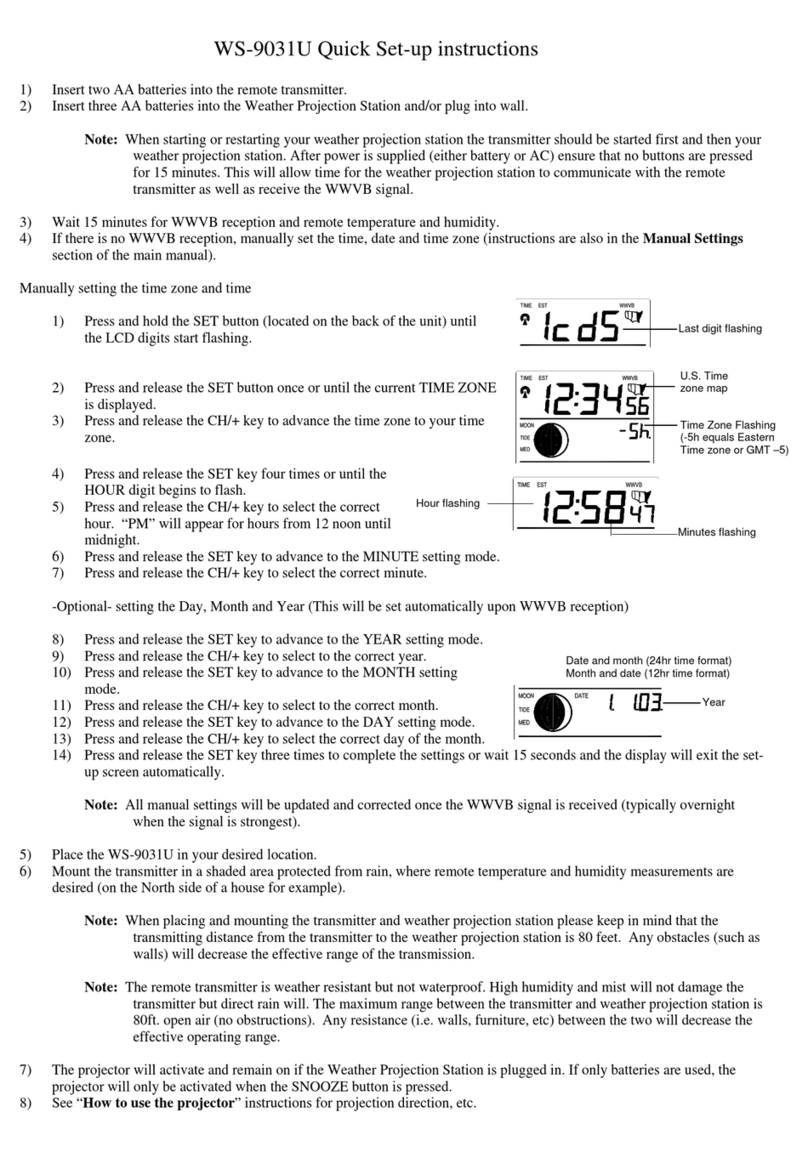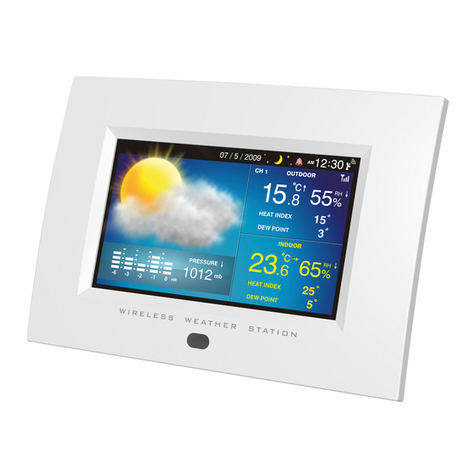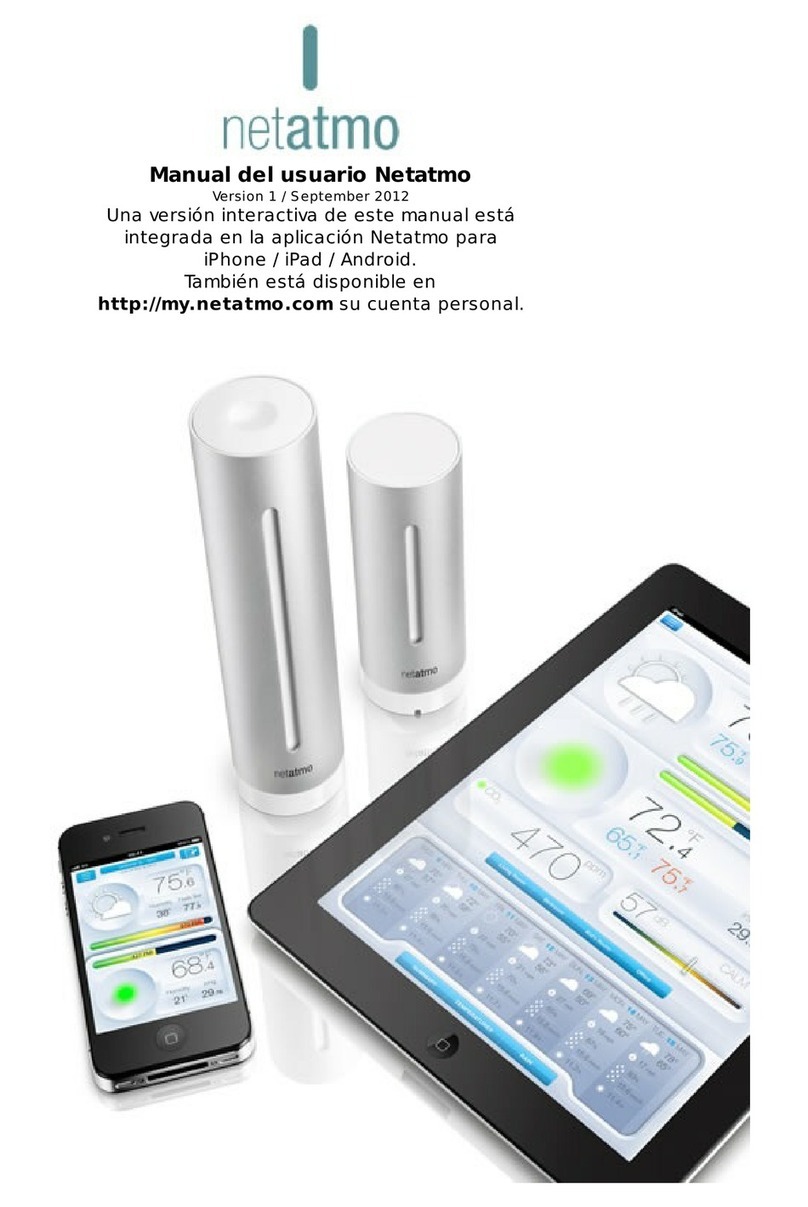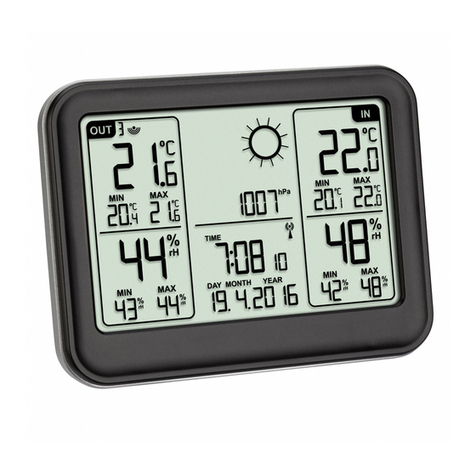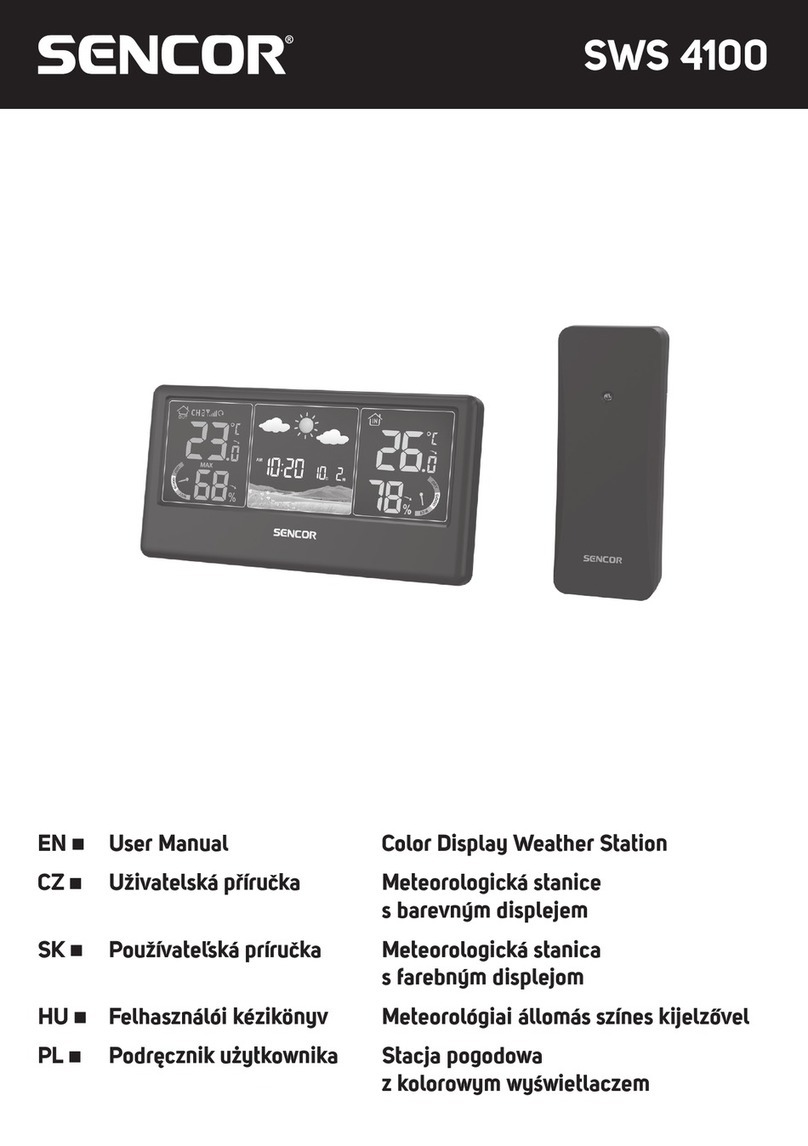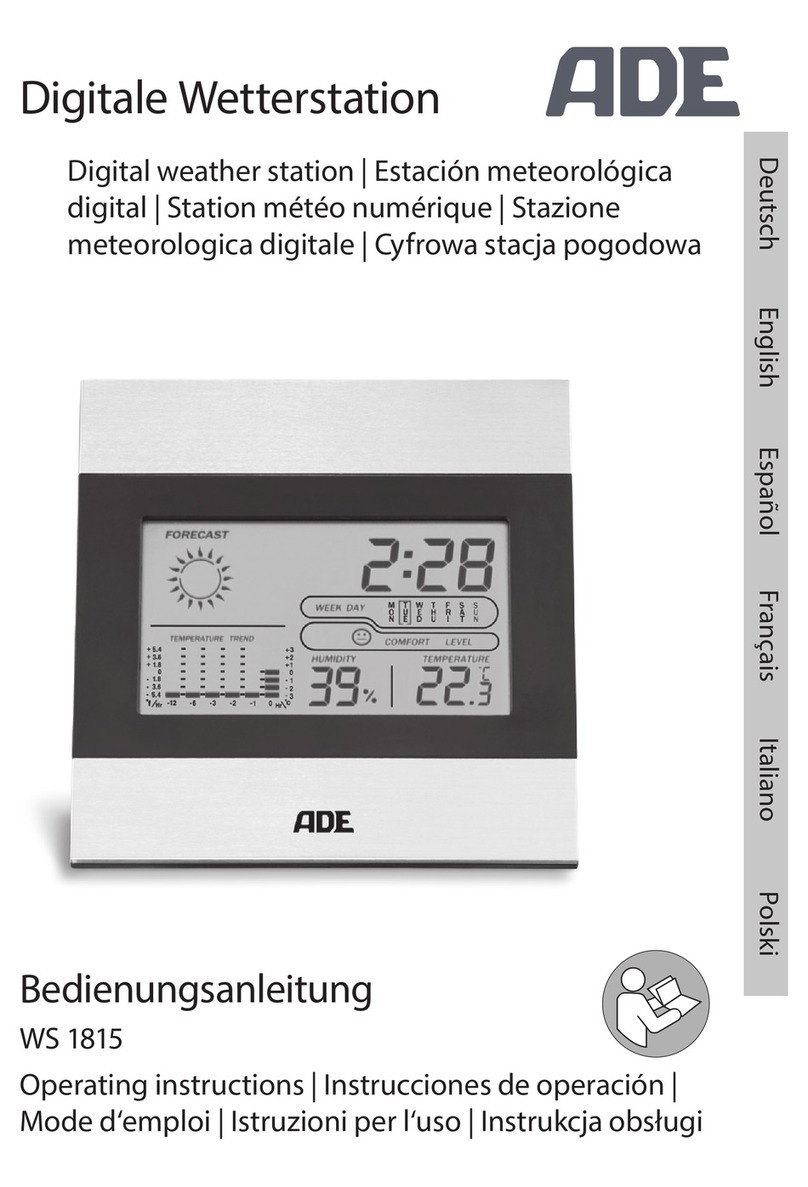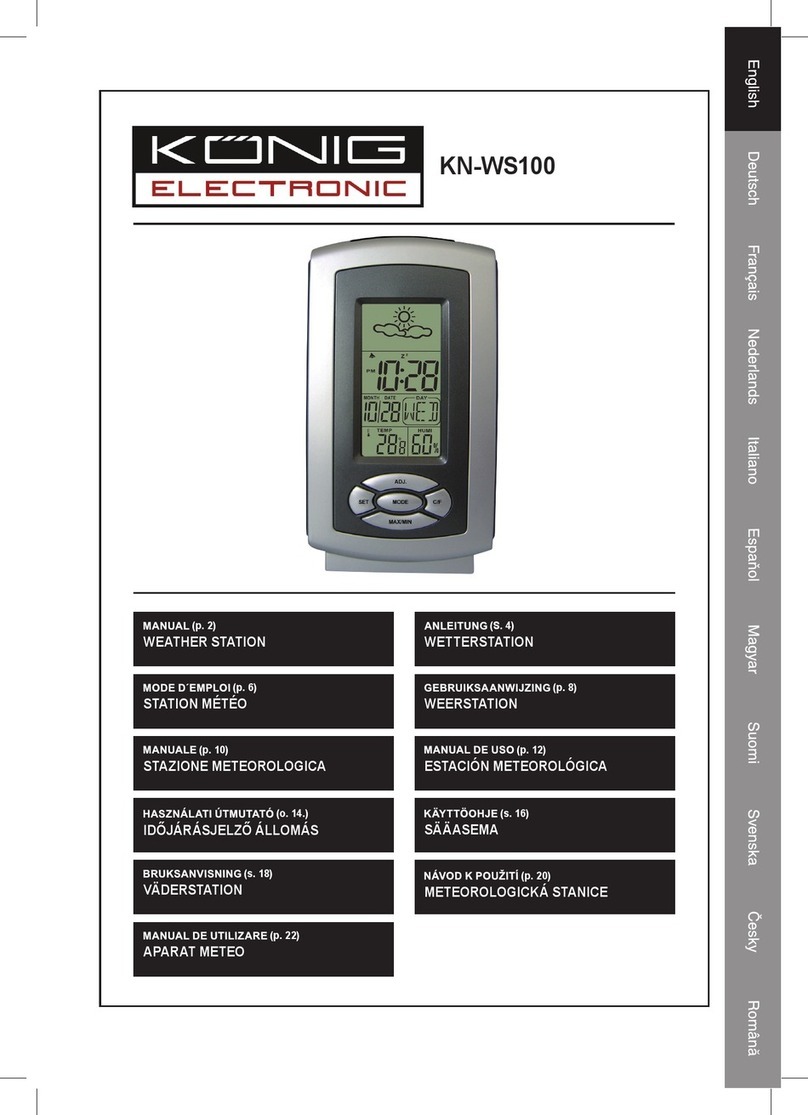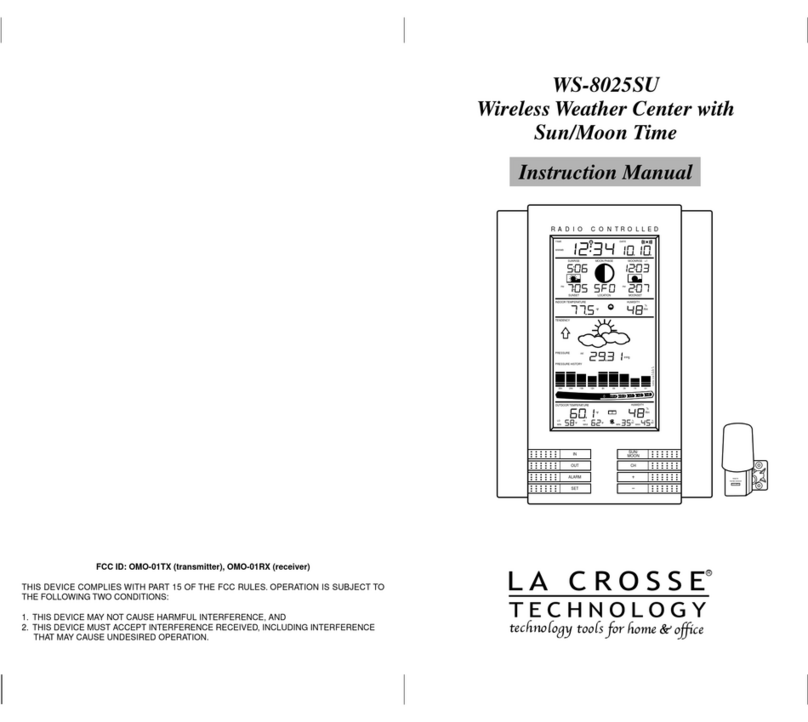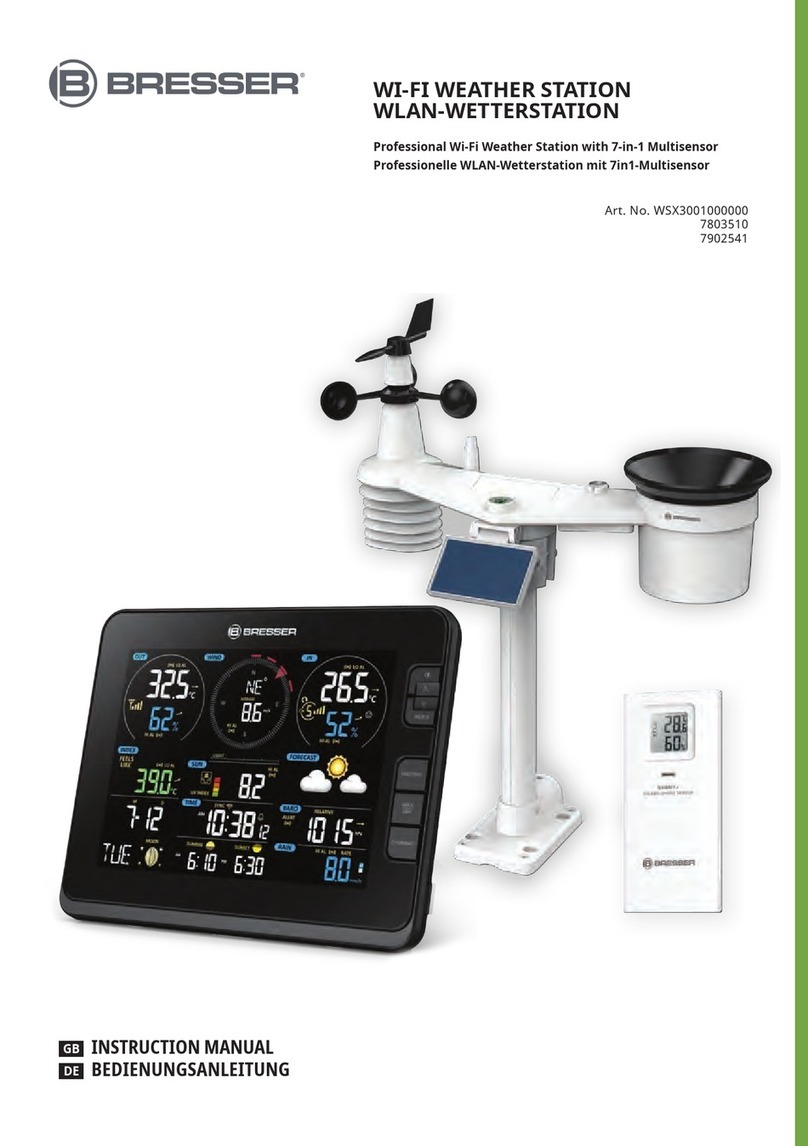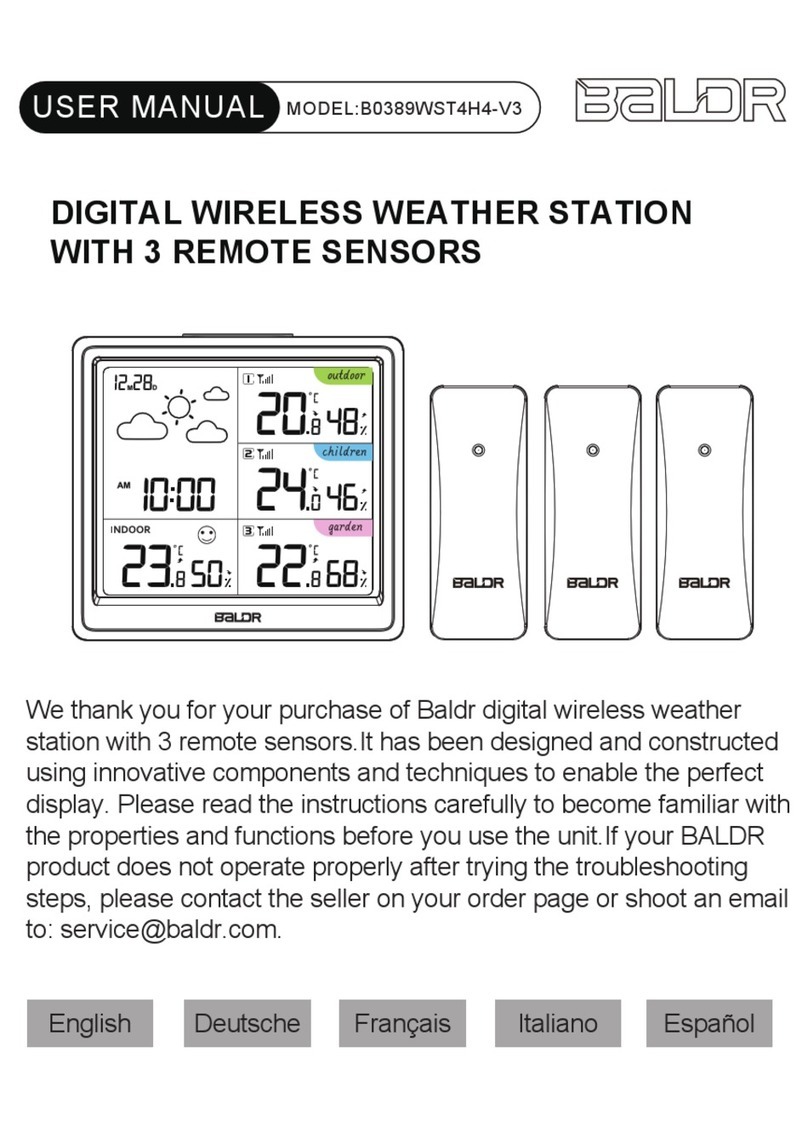Elsner Suntracer KNX-GPS User manual

Suntracer KNX-GPS light
Weather Stat ion
Technical specifications and installation instructions
EN
Elsner Elektronik GmbH Control and Automation Engineering
Herdweg 7
Germany Fax +49 (0) 70 56 / 93 97-20 www.elsner-elektronik.de

2 Description
Weather Station Suntracer KNX-GPS light • Version: 15.07.2013 • Technical changes reserved. Errors reserved.
1. Description
The Weather Station Suntracer KNX-GPS light light measures temperature, wind
speed and brightness. It perceives precipitation and receives the GPS signal for time
and position. Furthermore, the exact position of the sun (azimuth and elevation) is cal-
culated on the basis of location coordinates and time.
ATTENTION
The calculation of the position of the sun is optimised for UTC -1...+3.
The device therefore may only be applied within Europe. For other time
zones, please use Suntracer KNX-GPS Weather Station.
All data may be used for the control of switching outputs which depend on threshold
values. The states may be linked by means of AND and OR logic gates. The compact
housing of Suntracer KNX-GPS light stores the sensor system, the evaluation elec-
tronics and the electronics of the bus connection.
Functions:
•Brightness and position of the sun: The current light intensity is measured
by means of a sensor. At the same time, Suntracer KNX-GPS light calculates
the position of the sun (azimuth and elevation) on the basis of time and location
•Wind measurement: The measurement of wind speed is accomplished
electronically and thus noiseless and reliable even in case of hail, snow and
minus temperature. Air swirls and up-draught in the radius of the weather
station are collected, too
•Precipitation perception: The surface of the sensor is heated so that only
drops and flakes are recognised as precipitation but not fog or dew. If it stops
raining or snowing, the sensor dries quickly and the precipitation message
ends
• Temperature measurement
•Week and calendar time switch: The weather station receives time and date
from the integrated GPS receiver. The week time switch operates up to 4
different periods each day. With the calendar time switch, you may determine
3 additional periods where the time switch accomplishes up to 2 activations
and deactivations each day. The Switching outputs can be used as
communication objects. The switching times are set by parameter or via
communication objects
•Switching outputs for all measured and calculated values (Threshold values
can be set by parameter or via communication objects)
•8 AND and 8 OR logic gates with each 4 inputs. Every switching incident as
well as 8 logic inputs (in the form of communication objects) may be used as
inputs for the logic gates. The output of each gate may optionally be configured
as 1 bit or 2 x 8 bits
Configuration is made using the KNX software ETS. The programme file (format VD),
the data sheet and the manual can be downloaded from the Elsner Elektronik
homepage on www.elsner-elektronik.de in the “Service” menu.

3 Description
Weather Station Suntracer KNX-GPS light • Version: 15.07.2013 • Technical changes reserved. Errors reserved.
1.1. Technical specifications
The product conforms with the provisions of EC guidelines
• EMC Directive 2004/108/EC
Housing Plastic material
Colour White / translucent
Mounting On-wall
Protection category IP 44
Dimensions approx. 96 × 77 × 118 (W × H × D, mm)
Weight approx. 170 g
Ambient temperature Operation -30…+50°C, Storage -30…+70°C
Operating voltage 12…40 V DC (12…28 V AC)
Auxiliary current max. 185 mA at 12 V DC
max. 81 mA at 24 V DC
Residual ripple 10%
Bus current max. 8 mA
Data output KNX +/- bus terminal plug
BCU type Own micro controller
PEI type 0
Group addresses max. 254
Allocations max. 255
Communication objects 222
Heating rain sensor approx. 1.2 W (230 V and 24 V)
Measurement range
temperature:
-40…+80°C
Resolution (temperature) 0.1°C
Accuracy (temperature) ±1°C at -10…+85°C
±1.5°C at -25…+150°C
Measurement range wind 0…35 m/s
Resolution (wind) 0,1 m/s
Accuracy (wind) at ambient temperature -20…+50°C:
±22% of the measurement value when incident flow is
from 45…315°
±15% of the measurement value when incident flow is
from 90…270°
(Frontal incident flow corresponds to 180°)
Measurement range
brightness
0…150 000 lux
Resolution (brightness) 1 lux at 0…120 lux
2 lux at 121…1 046 lux
63 lux at 1 047…52 363 lux
423 lux at 52 364…150 000 lux
Accuracy (brightness) ±35%

4 Installation and commissioning
Weather Station Suntracer KNX-GPS light • Version: 15.07.2013 • Technical changes reserved. Errors reserved.
• Low Voltage Directive 2006/95/EC
The following standards and/or technical specifications have been applied:
• EN 50491-5-1: 2010
• EN 50491-5-2: 2011
2. Installation and commissioning
2.1. Installation notes
Installation, testing, operational start-up and troubleshooting should
only be performed by an electrician.
CAUTION!
Live voltage!
There are unprotected live components inside the device.
• National legal regulations are to be followed.
• Ensure that all lines to be assembled are free of voltage and take
precautions against accidental switching on.
• Do not use the device if it is damaged.
• Take the device or system out of service and secure it against
unintentional use, if it can be assumed, that risk-free operation is no
longer guaranteed.
The device is only to be used for its intended purpose. Any improper modification or
failure to follow the operating instructions voids any and all warranty and guarantee
claims.
After unpacking the device, check it immediately for possible mechanical damage. If it
has been damaged in transport, inform the supplier immediately.
The device may only be used as a fixed-site installation; that means only when assem-
bled and after conclusion of all installation and operational start-up tasks and only in
the surroundings designated for it.
Elsner Elektronik is not liable for any changes in norms and standards which may occur
after publication of these operating instructions.
2.1.1. Installation position
Choose an installation position in the building where wind, rain and sun can be meas-
ured unhindered by the sensors. The weather station must not be installed underneath
any structural parts from which water can still drip onto the rain sensor after it has
stopped raining or snowing. The weather station must not be shaded by anything,
such as building structures or trees. There must be at least 60 cm of free space under-
neath the weather station to allow it to measure the wind correctly and to prevent it
from being snowed in when it snows. The distance also protects the unit against da-
mage by birds.

5 Installation and commissioning
Weather Station Suntracer KNX-GPS light • Version: 15.07.2013 • Technical changes reserved. Errors reserved.
Please take note that an extended awning does not shade the device from sun and
wind.
Temperature measurements can also be affected by external influences such as by
warming or cooling of the building structure on which the sensor is mounted, (sun-
light, heating or cold water pipes).
Magnetic fields, transmitters and interfering fields from electricity consumers (e.g. flu-
orescent lamps, neon signs, switched-mode power supplies etc.) can interfere with or
even cut out reception of the GPS signal.
2.1.2. Mounting the weather station
2.1.3. Attaching the mount
The weather station comes with a combination wall/pole mount. The mount comes ad-
hered by adhesive strips to the rear side of the housing.
Fasten the holder vertically to the wall or pole.
Fig. 1
The weather station must be mounted on a
vertical wall (or a pole).
Wall
or
pole
min.
60 cm
Fig. 2
The weather station must be mounted in the
horizontal transverse direction (horizontally).
Horizontal

6 Installation and commissioning
Weather Station Suntracer KNX-GPS light • Version: 15.07.2013 • Technical changes reserved. Errors reserved.
Fig. 3
For wall mounting: Flat side to the wall, crescent
moon-shaped crosspiece facing up.
Collar
Fig. 4
For pole mounting: curved side to the pole,
crosspiece facing down.
Collar
Fig. 5
Different mounting arms are available from El-
sner Elektronik as additional, optional accesso-
ries for flexible installation of the weather station
on a wall, pole or beam.
Example of the use of a mounting arm: Due to
flexible ball joints, the sensor can be brought
into ideal position.
Fig. 6
Example use of the hinge arm mounting:
With the hinge arm mounting, the weather sta-
tion projects from beneath the roof overhang.
Sun, wind and precipitation can act upon the
sensors without hindrance.

7 Installation and commissioning
Weather Station Suntracer KNX-GPS light • Version: 15.07.2013 • Technical changes reserved. Errors reserved.
2.1.4. Rear view and drill sketch
Fig. 7
Example use of the hinge arm mounting:
Fitting to a pole with worm drive hose clips
Oblong hole 7,5 x 5 mm
Fig. 8 a+b
Drill sketch.
Dimensions of the rear side
of the housing with holder,
dimensions in mm. Diver-
gences are possible for
technical reasons.

8 Installation and commissioning
Weather Station Suntracer KNX-GPS light • Version: 15.07.2013 • Technical changes reserved. Errors reserved.
2.1.5. Preparing the weather station
The weather station cover with the rain sensor snaps in on the left and right along the
bottom edge (see Fig.). Remove the weather station cover. Proceed carefully, so as not
to pull off the wire connecting the PCB in the bottom part with the rain sensor in the
cover.
Push the power supply and bus connection cable through the rubber seal on the bot-
tom of the weather station and connect voltage and bus +/- to the provided clamps.
Fig. 9
1 Lid with rain sensor
2 Lid notches
3 Housing lower section
2
3
Unsnap cover and
remove upwards
1
Fig. 10
Remove the cable shielding under the circuit
board and only feed the connector cables up-
wards through the openings in the circuit
board.

9 Installation and commissioning
Weather Station Suntracer KNX-GPS light • Version: 15.07.2013 • Technical changes reserved. Errors reserved.
2.1.6. PCB layout
2.1.7. Mounting the weather station
Close the housing by putting the cover back over the bottom part. The cover must snap
in on the left and right with a definite “click”.
Fig. 11
1 Tension clamp for auxiliary voltage supply. For massive conductors of up to
1.5 mm² or conductors with fine wires. Terminal configuration independent from
polarity (+/- or -/+).
2KNXclamp+/-
3 Slot for cable connection to the rain sensor in the housing cover
4 Programming pushbutton for the teach-in of the device
5 Programming LED
6 Control LED GPS reception. As soon as valid GPS data is received, the LED blinks
1x per second. After the auxiliary supply voltage has been connected, it may take
some minutes before reception is established.
1
2
6
4
5
3

10 Installation and commissioning
Weather Station Suntracer KNX-GPS light • Version: 15.07.2013 • Technical changes reserved. Errors reserved.
To remove it, the weather station can be simply pulled upwards out of the mount,
against the resistance of the fastening.
2.2. Notes on mounting and commissioning
Do not open weather station if water (rain) might ingress: even some drops might
damage the electronic system.
Observe the correct connections. Incorrect connections may destroy the weather sta-
tion or connected electronic devices.
Please take care not to damage the temperature sensor (small blank at the bottom part
of the housing.) when mounting the weather station. Please also take care not to break
away or bend the cable connection between the blank and the rain sensor when con-
necting the weather station.
Remove all existing protection labels after installation.
The measured wind value and thus all other wind switching outputs may only be sup-
plied 60 seconds after the supply voltage has been connected.
After the auxiliary voltage has been applied, the device will enter an initialisation phase
lasting a few seconds. During this phase no information can be received via the bus.
Fig. 12
Make sure the cover and bottom part are
properly snapped together! This picture is
looking at the closed sensor from under-
neath.
Fastening
Fig. 13
Push the housing from above into the fas-
tened mount. The bumps on the mount must
snap into the rails in the housing.

11 Addressing of the device at the bus
Weather Station Suntracer KNX-GPS light • Version: 15.07.2013 • Technical changes reserved. Errors reserved.
3. Addressing of the device at the bus
The device is supplied with the bus address 15.15.250. You can program another ad-
dress into the ETS by overwriting the 15.15.250 address or by teaching via the pro-
gramming key on the circuit board inside the housing.
4. Maintenance
WARNING!
Risk of injury caused by components moved automatically!
The automatic control can start system components and place people in
danger (e.g. moving windows/awnings if a rain/wind alarm has been
triggered while cleaning).
• Always isolate the device from the mains for servicing and cleaning.
The device must regularly be checked for dirt twice a year and cleaned if necessary. In
case of severe dirt, the sensor may not work properly anymore.
ATTENTION
The device can be damaged if significant volumes of water penetrate the
housing.
• Do not clean with high pressure cleaners or steam jets.
Other manuals for Suntracer KNX-GPS
1
Table of contents
Other Elsner Weather Station manuals
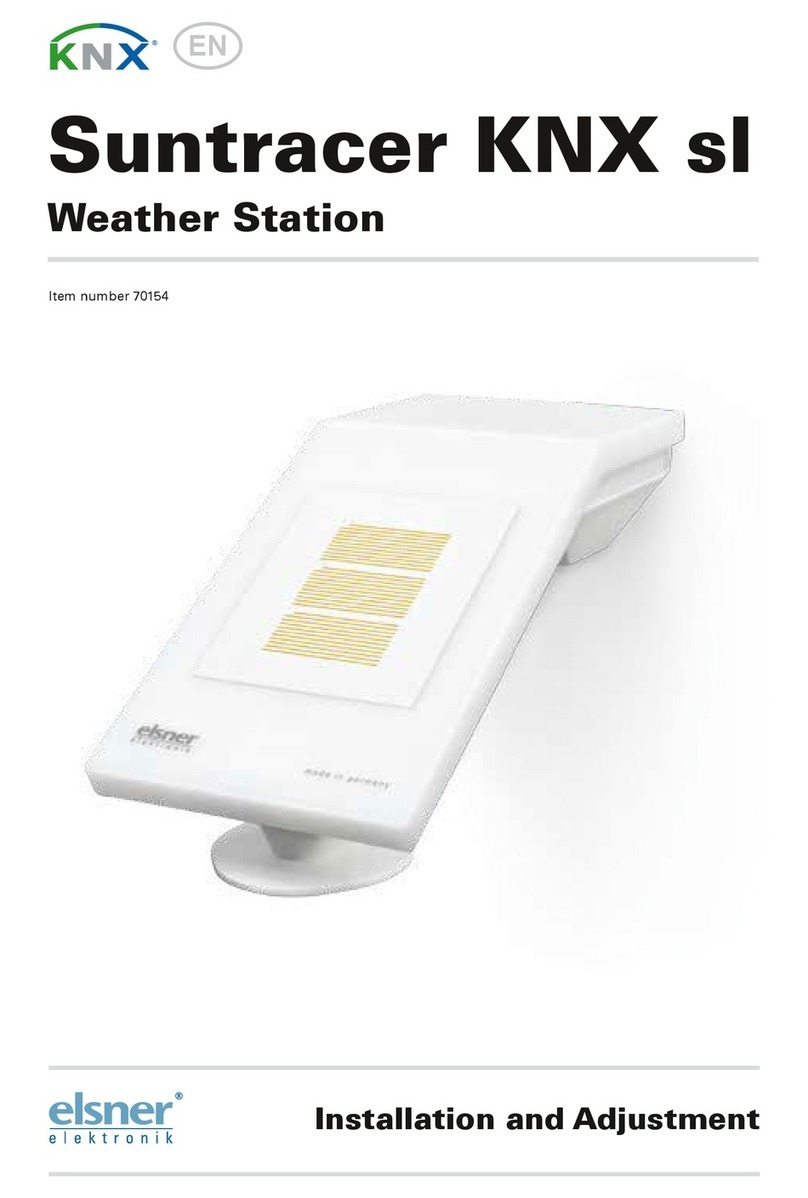
Elsner
Elsner Suntracer KNX sl Guide
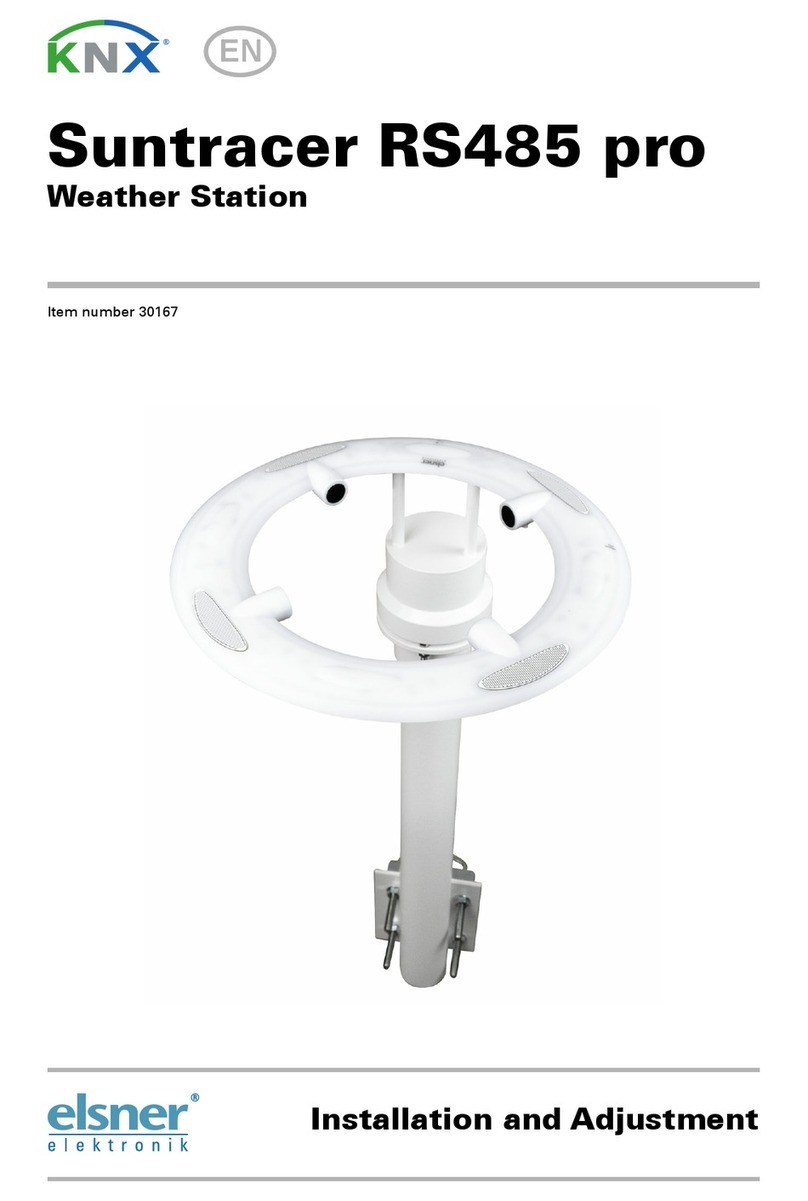
Elsner
Elsner KNX Suntracer pro Guide
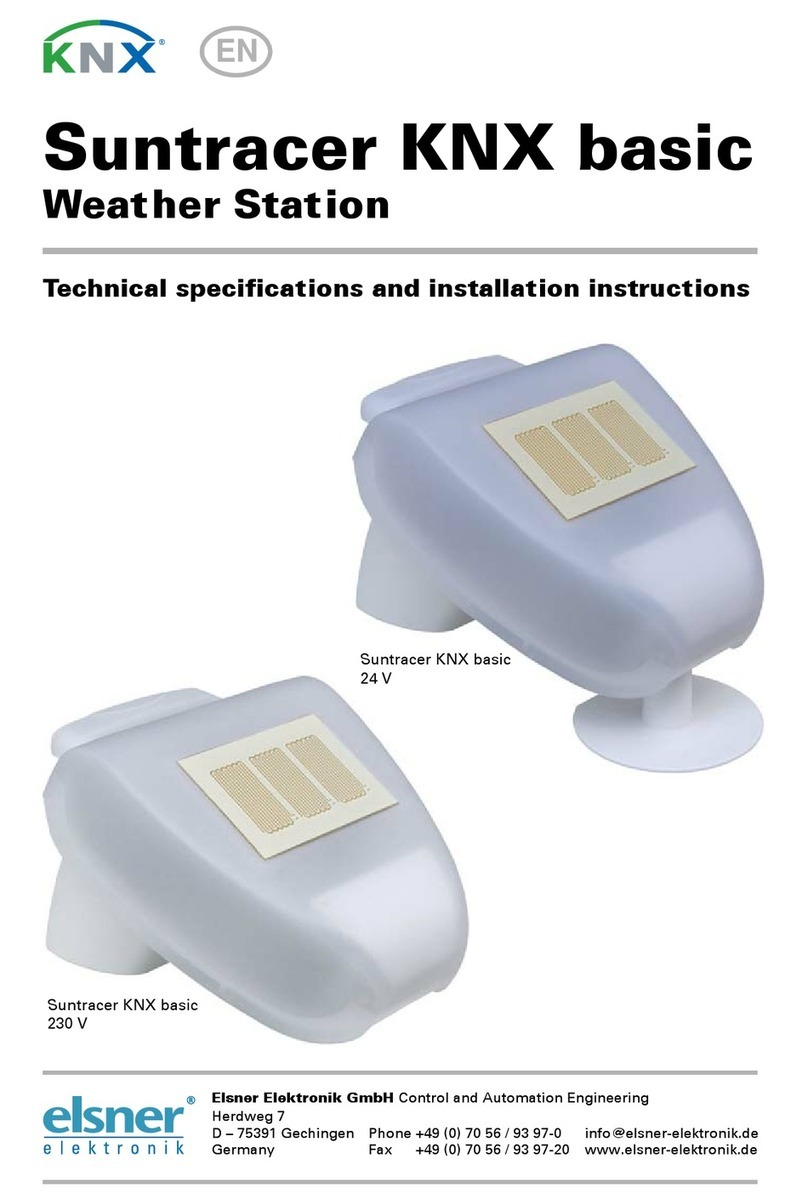
Elsner
Elsner Suntracer KNX basic Series User manual
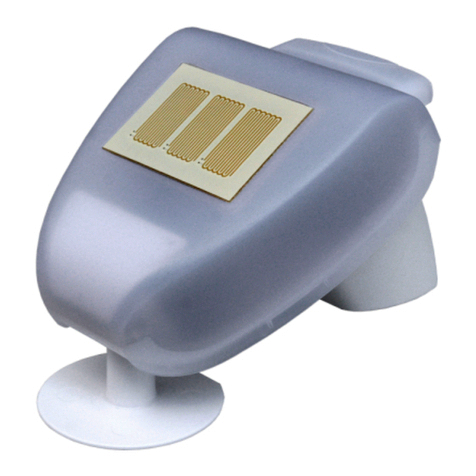
Elsner
Elsner Suntracer KNX basic Guide
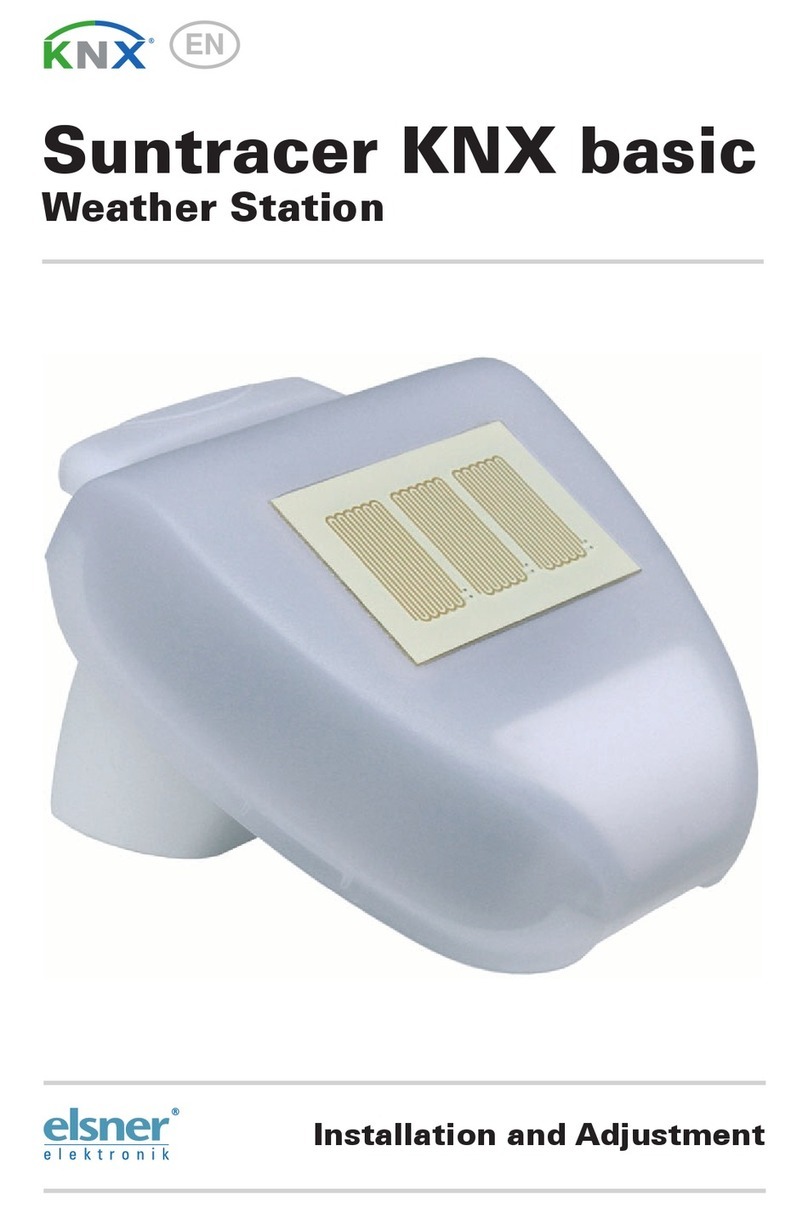
Elsner
Elsner Suntracer KNX basic Guide
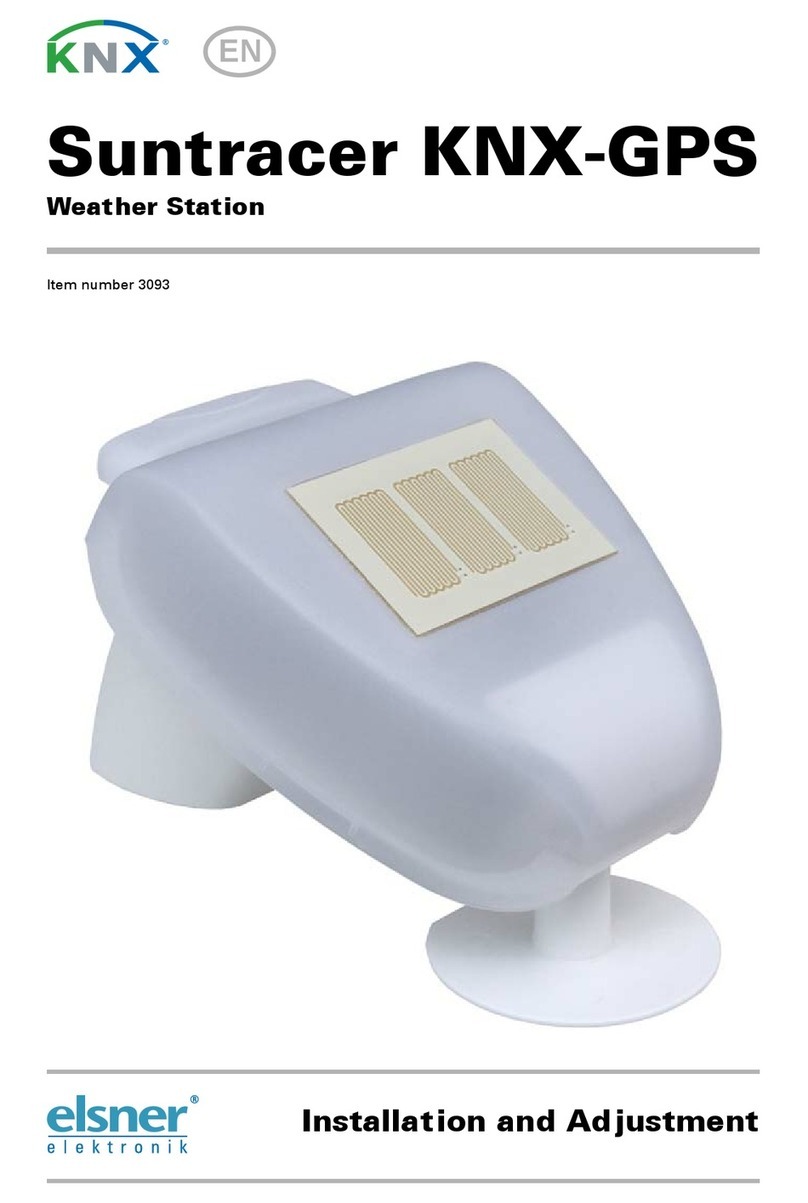
Elsner
Elsner Suntracer KNX-GPS Guide
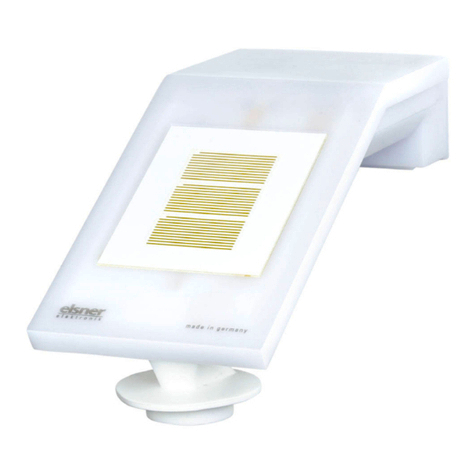
Elsner
Elsner Suntracer KNX sl Guide
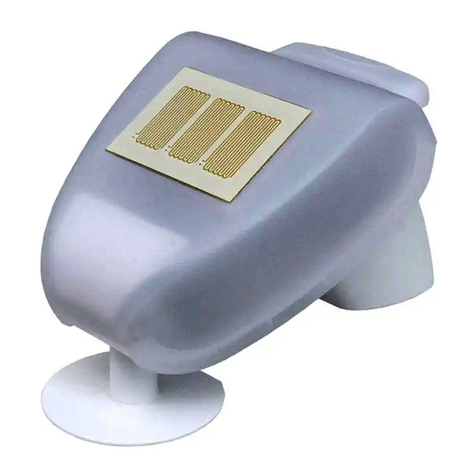
Elsner
Elsner P03 3 User manual

Elsner
Elsner P03/3 User manual
